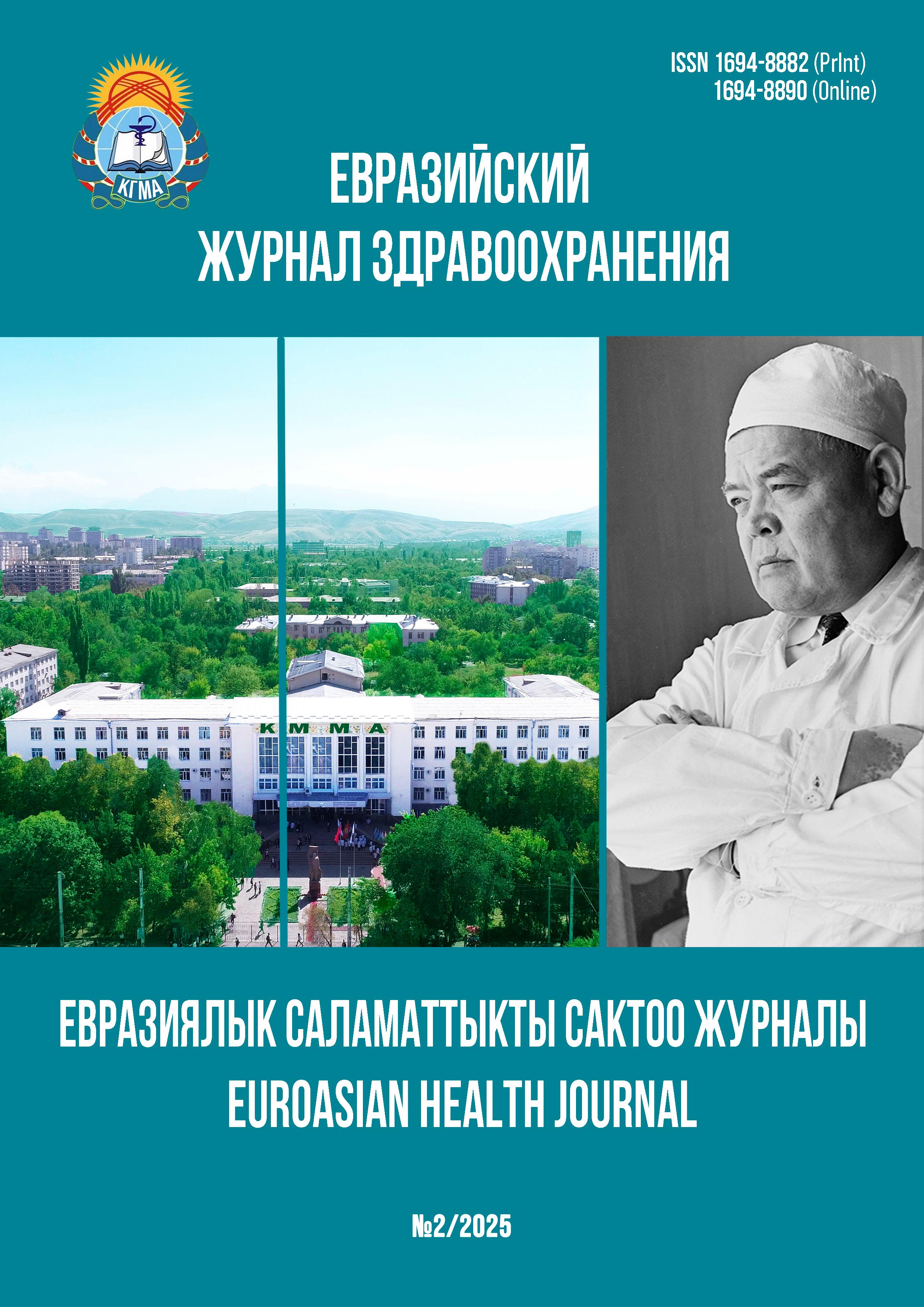ПРИМЕНЕНИЕ ХИТОЗАНОВОГО ГЕЛЯ ПРИ ПОСТТРАВМАТИЧЕСКОЙ ПЕРФОРАЦИИ БАРАБАННОЙ ПЕРЕПОНКИ
DOI:
https://doi.org/10.54890/1694-8882-2025-2-103Аннотация
Цель данной работы отследить и оценить результат воздействия хитозана на регенерацию тканей при посттравматической перфорации барабанной перепонки, возникшей вследствие механического повреждения, баротравмы или инфекционных процессов.
В исследовании был применен хитозан – биополимер, обладающий регенеративными и противовоспалительными свойствами.
Поскольку в результате острой травматической перфорации барабанной перепонки существует вероятность вовлечения в патологический процесс структур среднего и внутреннего уха, для оценки слуха в динамике целесообразно использование как субъективных, так и объективных методов. В статье авторы приводят данные по поводу применения хитозанового геля при посттравматической перфорации барабанной перепонки, который впервые используется в Кыргызстане как метод регенерации ткани, что ведет к ее восстановлению, а также приводят результаты сравнения с контрольной группой.
В результате исследования было отмечено, что применение хитозана при травме барабанной перепонки открывает перспективы для разработки новых методов лечения, способствующих быстрому и безопасному заживлению тканей, а также снижению воспалительных реакций и профилактике осложнений.
Ключевые слова:
перфорация барабанной перепонки, хитозан, шум в ухе, снижение слуха, восстановление барабанной перепонкиБиблиографические ссылки
1. Полякова С.Д., Батенева Н.Н., Попова Б.А. Комплексный подход к диагностике и лечению травматических отитов. Российская оториноларингология. 2009;41(4):114-118.
2. Староха А.В., Давыдов А.В., Кочеров С.Н. Способ мирингопластики без заполнения барабанной полости рассасывающимися материалами. Российская оториноларингология. 2012;58(3):115-119.
3. Гуров А.В., Крюков А.И., Левина Ю.В., Бахтин А.А., Дубовая Т.К., Мурзаханова З.В. Регенерация барабанной перепонки и оценка динамики слуха при острой травматической перфорации барабанной перепонки после аппликации плазмы крови, обогащенной тромбоцитарными факторами роста. Вестник оториноларингологии. 2021;86(4):23–30. https://doi.org/10.17116/otorino20218604123
4. Насыров В.А., Иаева Т.А., Исламов И.М. Практическое руководство по аудиологии. Бишкек. 2014:110-112.
5. Onal K, Kazikdas KC, Uğuz MZ, Gursoy ST. A multivariate analysis of otological, surgical and patient-related factors in determining success in myringoplasty. Clinical Otolaryngology. 2005;30(2):115-120. https://doi.org/10.1111/j.1365-2273.2004.00947.x
6. Lee D, Honrado C, Har-El G, Goldsmith A. Pediatric temporal bone fractures. Laryngoscope. 1998;108(6):816-821. https://doi.org/10.1097/00005537199806000-00008
7. Туманов В.П., Пальчун В.Т., Поматилов А.А., Полякова Е.В., Захарова А.В., Ярыгин В.Н. Современные клеточные технологии при лечении больных с травмой барабанной перепонки после минно-взрывных повреждений. Вестник оториноларингологии. 2006;2:92-95.
8. Кротов Ю.А. Мирингопластика при обширных перфорациях барабанной перепонки. Вестник оториноларингологии. 2001;5:57-59.
9. Шелеско Е.В., Черникова Н.А., Фомочкина Л.А., Лебедев М.А., Никонова С.Д., Доронина В.А. и др. Принципы диагностики и лечения шума в ушах. Журнал неврологии и психиатрии. 2021;121(11):99-105. https://doi.org/10. 17116/jnevro202112111199
10. Изаева Т.А., Исмаилова А.А., Беднякова Н.Н. Особенности лечения тиннитуса при слухопротезировании пациентов с сенсоневральной тугоухостью. Вестник КРСУ. 2022;22(9):41-44. https://doi.org/10.36979/1694-500X-2022-22-9-41-44







